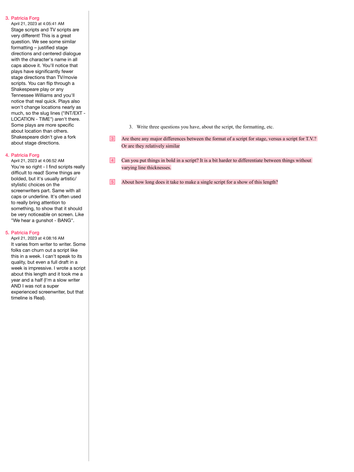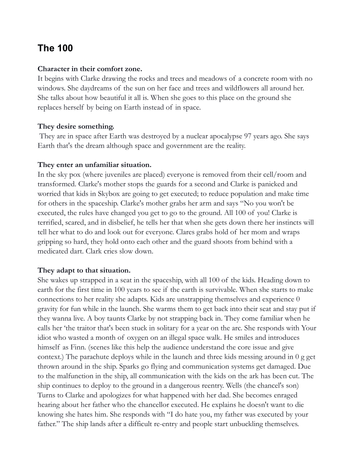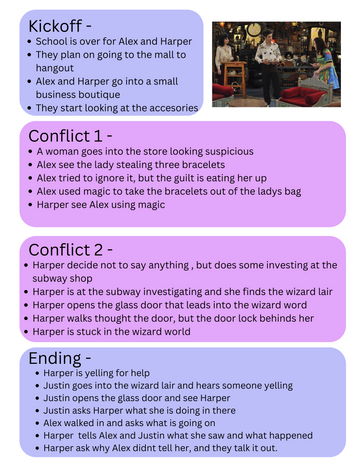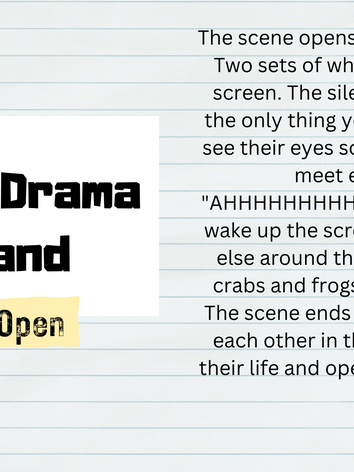
Patricia Forg
English Teacher
11th Grade Humanities
Don't Open, Dead Inside
I. Why Media Literacy?
& Project Launch

Literacy comes in many different forms, and in a world run by social media and popular culture, it is as important to cultivate students' critical thinking about the media they consume as it is to cultivate their critical thinking about books and writing. Media literacy is a phrase that is becoming increasingly popular as consumers have become more active viewers and participants in the content they consume.
To account for this developing social reality, I incorporated a short media-literacy unit into my 11th grade classroom.
I launched this unit with an activity in which students discussed what made their favorite shows good. This allowed them to explore the meaning of "good" in terms of story and share ideas about media they consume on a regular basis. This was an early introduction to the kind of language we'll be using throughout the project.
Students were introduced to the concept of screenwriting by exploring the story foundations of a pilot episode. We discussed what a 'pilot episode' was, including the qualities we considered vital to a successful pilot. Students reflected on the shows they watch and enjoy to consider what it was about the first episode that made them want to continue watching, and identified the qualities that came up most often.
Students watched a video that outlined the qualities of a good pilot, using the first episode of Breaking Bad to outline the beats of the story. This video also introduced Dan Harmon's Story Circle, which breaks down a story into eight identifiable points.
II. Story Foundations
III. Media Analysis


Once students were comfortable with the building blocks of a good pilot and Dan Harmon's story circle, we watched the pilot episode of The Walking Dead as a class. While watching, students filled out a note-catcher, the purpose of which is two-fold: to guide their attention on the most important points throughout the episode, and to ask guided questions that will give them the opportunity to begin thinking critically and analyzing the episode as text.
After watching the episode, students had the opportunity to talk in small groups about what stood out to them and how the episode fit into the framework of a "good pilot" based on the video we watched. Students shared their thoughts with the whole class, opening up the opportunity for conversation, including on what points they agreed or disagreed on.
Students were then given a graphic organizer which asked them to plot out a story circle using the events of the pilot episode of The Walking Dead. I instructed them not to worry about filling in the step that says the character "returns to their place of comfort", as this typically doesn't happen in pilot episodes which are setting up for a longer story. The students surprised me, however, by making a good argument for Rick returning to his comfort zone after all, showing an impressive extra step in critical thinking that challenged the expectations.
Students were challenged to complete this organizer independently from my input, while also being encouraged to collaborate with each other. Almost every student, out of 54, had different versions of the story circle using the same media source. We shared a number of these aloud and discussed how and why these differences showed up, and the significance of varied interpretation of the same media.
We did not have time to go into detail on the actual art of screenwriting as I would like to do in an extended version of this unit. However, students were provided with a PDF copy of the script for the pilot episode of The Walking Dead. They were instructed to select a scene that they remembered and enjoyed from the episode and read the script for that particular scene, discuss what happened and what they noticed, and ask three questions they had about screenwriting or the script itself.
Once students felt comfortable with interpreting media as text and identifying the parts of the story circle that make up the whole, students were given time for individual exploration. During this time, students explored the TV shows they enjoyed and used what they learned to analyze their content. Based on the qualities that make up a good pilot, students selected one of their favorite shows that would guide their work throughout the remainder of the unit.
Once they selected their focus show, students watched and analyzed the pilot episode. They broke the pilot episode down into the same story circle format they used to break down The Walking Dead. For this story circle, students spent extra time adding as many details as they could, such that someone who has never seen the show can follow the plot from start to finish, with the story circle as a guide. This allowed students to more deeply connect to the content that they consume and think about it critically, from the lens of literary analysis.
IV. Individual Exploration

V. Creative writing


In the final part of this unit, students tackled a new challenge in using their new skills of analysis for media in order to complete a creative aspect of the project. Students will continue to work with the show they selected for the independent exploration part of this unit. We will discuss the very simple arc of a (non-pilot) episode, beginning with the kick-off, the conflict (which should be split down the middle by the midpoint), and the pay-off. At this point, students will start thinking of themselves as showrunners, and their job will be to pitch an episode of their chosen television show. This episode can take place before the show, after the show, or at any point during the show; it's up to them how they choose to navigate this creatively.
As students begin drafting their products, we'll discuss the role of a "cold open" in television, from comedy shows that have a cold open in every episode (such as The Office) and shows that use cold opens sparsely (such as Game of Thrones). We'll discuss the role that a cold open plays in both of these scenarios, what makes a good cold open, and how they are woven into the story. Once students show an understanding of cold opens, they will be tasked with including a cold open in their own episode pitch, regardless of whether or not the show they selected typically has them.
Students will use a mentor piece to guide the creation of their episode pitch. I created this mentor piece in which I broke down an existing episode of House of the Dragon (with a few personal touches and changes). Students are welcome to create a hand-written pitch similar to the mentor piece or create something new, whether it be on Canva or something as simple as a written document outlining their idea, so long as it includes a cold open, kick-off, conflict, and pay-off.

































